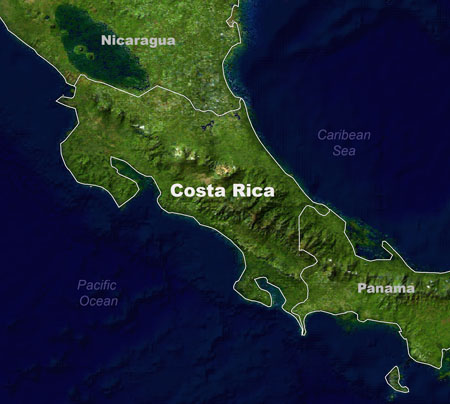|
CAS IN COSTA RICA (Draft)
Until 3 million years ago, the flora and fauna of North and South America were isolated on separate continents. Dramatic geologic processes occurring at this time raised sections of what is now Central America to create a land bridge between the two continents. As a result, Costa Rica is considered an important transition zone for many rare species and diverse ecological communities. Botanists, Entomologists, Invertebrate Zoologists, Anthropologists, and even staff from the Education Department at the California Academy of Sciences have been actively working in Costa Rica documenting and disseminating information about this unique country.
Learn more about the people and institutions involved and our conservation actions in Costa Rica.
|
 |
People and Institutions
While Costa Rica is only slightly smaller than the state of West Virginia at 51,100 sq km, CAS researchers and their local partners have surveyed rich marine habitats, coastal mangrove forests, and subalpine cloud forests. CAS Curator of Botany, Dr. Frank Almeda is presently working on the first modern inventory of the Princess Flowers Blakea spp. in the Melastomataceae family. Through his collaboration with Gina Umana Dodero former curator at Museo Nacional de Costa Rica, Almeda is in the process of describing nearly 50 new species of the Princess Flower and co-authoring a manual of the Plants of Costa Rica. CAS Entomologists Dr. Dave Kavanaugh and Dr. Norm Penny are conducting biotic surveys with Costa Rica’s local conservation NGO, National Biodiversity Institute (INBio) to document and collaborate on the production of informative products on the country’s ground beetle (Carabidae) and lacewing (Neuroptera) populations, respectively. On the Pacific Coast of the country, CAS Invertebrate Zoologist and Academy Provost, Dr. Terry Gosliner is collaborating with Yolanda Camacho-García and Monica Medina to create the first-ever comprehensive inventory of Nudibranchs or Sea Slugs of Costa Rica that will be incorporated in an online guidebook. CAS Director of Education, Dr. Meg Burke is developing educational programs highlighting the research techniques for documenting Sea slugs for Costa Rica and California educators. Since eighty per cent of the country’s indigenous peoples inhabit these rare ecosystems, June Anderson and Jennifer Michael from the Anthropology department are exploring the textile arts of the Boruca.
Conservation Actions
As much as 25 percent of Costa Rica’s territory is under ecological protection, the country occupies a valuable place in an ambitious conservation project known as the Mesoamerican Biological Corridor Project. Eight countries including, Guatemala, Belize, El Salvador, Honduras, Nicaragua, Costa Rica, as well as a third of Mexico and nearly two-thirds of Panama are part of the Mesoamerican biodiversity hotspot that encompasses an important corridor for migrating neotropical species. Costa Rica’s own La Amistad Biosphere Reserve, where many CAS expeditions take place, provides the backbone for the Central American section of the Biological Corridor Project due to its diverse landscape and rich cultural significance. While CAS research is not directly related to the Biological Corridor Project, the information gathered from these expeditions will help direct local conservation decisions at many levels in the future.
Read about new species described by CAS research in Costa Rica
|

